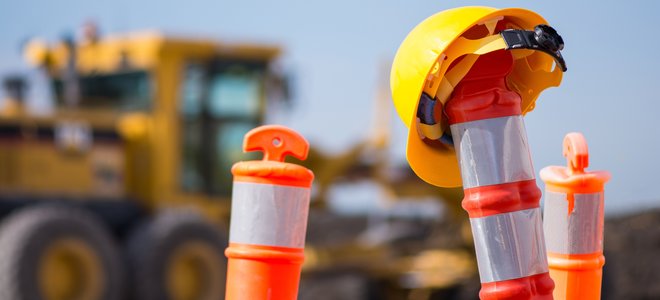Roadside work zones present a unique set of hazards for construction crews. Employers need to ensure employees know and follow specific safety procedures to help keep them safe.
Working around traffic is dangerous, whether it involves an infrastructure project or construction along a busy street. Crews working alongside the road or directing traffic around their site are at constant risk of being struck by passing vehicles.
The hazards can have serious consequences. From 2014 through 2023, nine roadside workers in B.C. were killed and another 251 injured severely enough to miss work, according to WorkSafeBC. Approximately 30,770 workdays were lost due to the injuries. Claims cost $16 million.
The annual Cone Zone safety awareness campaign, managed by Road Safety at Work, helps employers keep their employees and road users safe. Here are some tips to help you meet your responsibilities while keeping traffic flowing efficiently.
Know your safety responsibilities
Employers, supervisors, and prime contractors all have roadside work zone safety responsibilities. They’re outlined in our What Employers Need to Know to Keep Roadside Workers Safe Guide. It addresses the requirements of WorkSafeBC’s OHS regulations Part 18 and the 2020 Traffic Management Manual for Work on Roadways.
Employers need to comply with both. If the guidelines differ, follow Part 18 of the Regulations.
Complete a risk assessment unique to each work zone
Keeping employees safe requires a well-planned work zone layout and traffic management plan. To build one, do a three-part risk assessment.
- Identify the roadside work zone hazards
Every work zone has its own set of hazards associated with roads, traffic, vehicles, weather, and work activities. Use the hazard identification checklist in our Roadside Work Preparation Guide to get started. Ask workers to help you identify the hazards.
- Determine the risk to workers
Ask yourself how likely it is that your workers will encounter the hazards you’ve identified. How serious would the potential harm be? Rate the risks according to probability and severity.
- Manage the risks
Keeping traffic away from your roadside workers is one of your main goals. Speeding and distracted driving are two of the most common causes of work zone crashes.
Where possible, detour traffic away from your site. If you can’t do that, use temporary traffic control devices such as barriers. Adjust schedules so work is done when traffic volumes are low. Make sure workers know and follow safe procedures, such as always facing traffic when near the road. They need to understand the hazards, properly use high-visibility apparel and other personal protective equipment, effectively communicate with co-workers, and know their emergency escape route. Review our Work Zone Planning Tool Kit for more tips.
Prepare your crews before they leave for the site
Review what roadside workers need to know with your staff. It lists questions you can ask to help make sure they’re prepared and have the equipment they need.
Give them a roadside work safety quiz. Hold a tailgate meeting, using our Set Up and Take Down of Roadside Work Zones Guide.
Remind crews of the rules for work zone driving
Your crews may encounter roadside work zones as they drive to job sites. So give them a quick refresher on the driving laws that will help keep them, their passengers, and roadside workers safe:
- Pay attention and put away phones.
- Follow instructions from traffic control persons or temporary road signs and devices.
- Follow BC’s Slow Down Move Over law when approaching vehicles with red, blue, amber, or white flashing lights. In addition to reducing speed, drivers need to move over on a multi-lane road to increase the space between their vehicle and the work zone, if it’s safe to do so.
Have your crews review more work zone driving tips.
Run your own roadside work zone awareness campaign
No matter how experienced your crews are, they can benefit from safety refreshers. Use your social media, website, newsletters, and email to remind them – and your customers – of the need to ensure all roadside workers go home safe.
Visit ConeZoneBC for more information. To make it easy, download messages, images, and videos from Cone Zone campaign resources.










